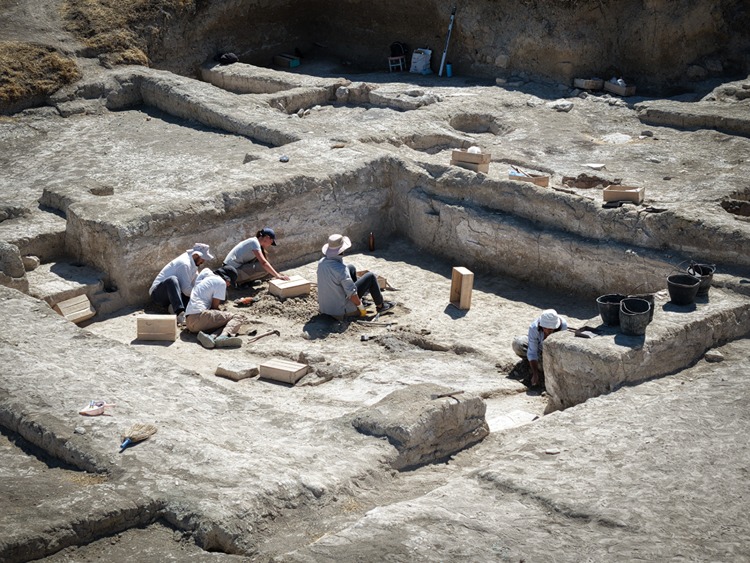The first city-state is being deciphered at Arslantepe

The first excavations at the approximately 7,000-year-old Arslantepe Mound, located on the west bank of the Euphrates River in the Battalgazi district of Malatya, began in 1932 with a French team led by Louis Delaporte.
Academics from the Sapienza University of Rome took over the excavations, which had been carried out by the French team for approximately 29 years, in 1961.
🔹 Anadolu Agency for current developments, exclusive news, analysis, photos and videos
🔹 AA Live for instant developmentsIt was understood that Arslantepe Mound, where excavations have been ongoing for nearly a century, hosted many civilizations from the Late Chalcolithic period to the Iron Age.
Excavations are carried out every year at Arslantepe Mound, which reflects the rich historical culture of Anatolian lands, to investigate how the "state system" was born.
During excavations carried out in the adobe palace section of the site, 250 seal impressions were found in the 5,625-year-old temple in 2021.

In the excavations carried out in other parts of the palace, 2 spears depicting the military system and 9 swords, 3 of which have silver hilts, shed light on the most important example of the state formation system, as they show the first examples of the use of weapons.
Arslantepe Mound also reveals the structures of the "first city-state" with its lion statues, a toppled king statue, an adobe palace with infrastructure such as a rain drainage line, and more than 3,000 seals.

Arslantepe Mound Excavation Team Head Prof. Dr. Francesca Balossi Restelli told an AA correspondent that she has been continuing the excavations, which she began when she was a student, for nearly 30 years.
Restelli, who stated that they discovered a royal tomb on the first day of excavations, said, "Every year, small finds tell us about ancient life. We put everything together layer by layer and understand history. Every year, very important things are unearthed at Arslantepe Mound. The finds tell us about the prehistoric period of Anatolia."

Restelli stated that many artifacts have been found in the Arslantepe Mound to date.
Restelli, stating that many of the works are exhibited in museums, continued:
"Arslantepe Mound tells us how the first state system emerged. While excavating here, we also examine earlier layers of the state. We examine how hierarchy emerged, how social systems changed, and how hierarchy began from the Neolithic to the Chalcolithic period. By far, the most important thing is the state system. At Arslantepe Mound, you can see the world's oldest palace. All the artifacts within this palace tell the story of the state system, bureaucracy, kingship, and power."

Restelli stated that the adobe palace covers an area of 400 square meters and that they are working to find new findings in the area.
Restelli noted:
The palace walls were 10 meters thick, but now only 2.5 meters remain. There are thousands of artifacts inside the palace, and they are on display. It's a very important place for archaeologists. We know everything that was done and used in every room. Receipts were used in the palace. Meals were given to civil servants and workers in vases, which were covered with mud, and a seal was stamped for each worker. It became a complete receipt. They counted these receipts and calculated them. At the end of the year, they calculated and knew how many meals were given to the worker. We found these receipts in an archive, and there are more than 3,000 of them. When we looked at them, we found 250 different seals. Apparently, there were more than 250 civil servants and workers in the palace.

AA





